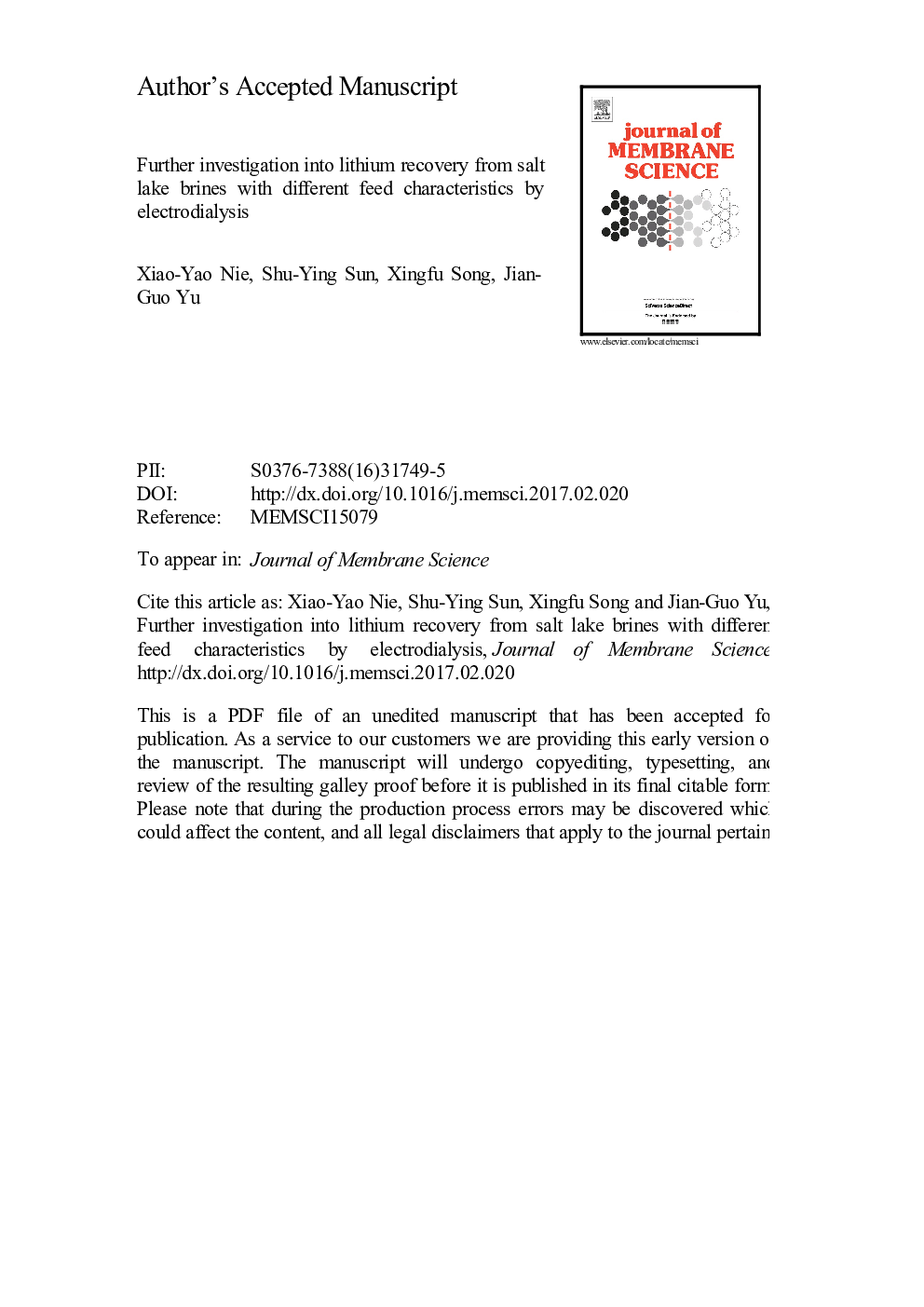| Article ID | Journal | Published Year | Pages | File Type |
|---|---|---|---|---|
| 4988873 | Journal of Membrane Science | 2017 | 34 Pages |
Abstract
Although lithium resources are abundant in the salt lakes located in West China, the majority of these resources have a high Mg/Li ratio, which is problematic because traditional precipitation methods are unsuitable for lithium recovery from this type of brine. In our previous work, constant-current electrodialysis (ED) was applied to comprehensively investigate the effects of operating conditions on the Li+/Mg2+ separation, however, the experimental study considering the feed characteristic diversity and the theoretical analysis of the ionic transfer process considering the feed composition complexity were remained to be perfected. This work focused on resolving the remained questions therein. Initially, we determined the ion-exchange isotherm of the CSO membrane. The selective affinity towards divalent cation was validated, which laid the foundation for the development of the electric double layer (EDL). Then, we investigated the effects of applied voltage on the separation performance and optimized the power mode. The constant-voltage was verified to be a superior power mode compared to the constant-current applied in our previous work. Thereafter, the feed solutions characterized by different Mg/Li ratios, Na/Li ratios, and sulfate concentrations were treated by constant-voltage ED, wherein the partitioning principle was further explained via a thermodynamic analysis of the aqueous species distribution of ions. The results showed that in a high-salinity aqueous system, mass transfer was significantly affected by the complexity of the ions' existing forms, which notably determined the steric hindrance and charge effect. As a specific transfer phenomenon, we found that sulfate ions provided large benefit to lithium recovery in the salt lake brine system. A natural brine experiment also showed that lithium recovery can be effectively achieved by ED. These observations indicated that ED has a wide adaptability for lithium recovery from brines with different feed characteristics.
Keywords
Related Topics
Physical Sciences and Engineering
Chemical Engineering
Filtration and Separation
Authors
Xiao-Yao Nie, Shu-Ying Sun, Xingfu Song, Jian-Guo Yu,
